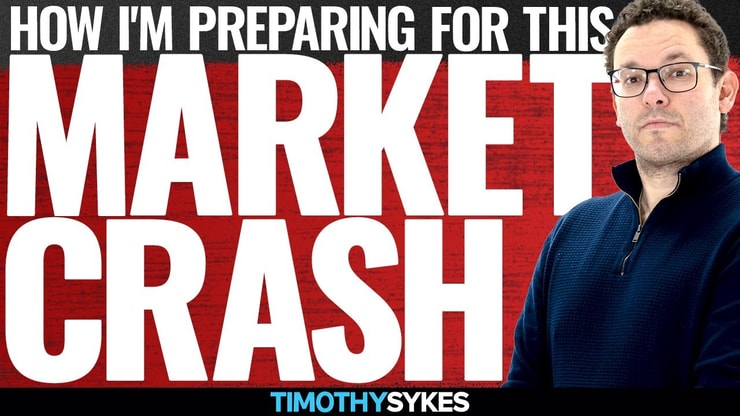Hey, trader. Tim here.
Things are pretty dicey for the overall market.
The FED’s recent interest rate hike continues to drag prices down. We’re approaching year lows.
I think there’s a pretty good chance prices will fall off a cliff. Actually, I’m hoping for it. Take a look at my recent Tweet…
I've been asking for this #stockmarketcrash for soooooo long, c'monnnnnn $DIA $SPY $QQQ you can do ittttt, please be today, please be today! #BlackFriday https://t.co/cuOZjkbGoy
— Timothy Sykes (@timothysykes) September 23, 2022
I’ve been in this niche a long time. Over 20 years. And in all that time I’ve learned a lot. Let me share some wisdom with you.
The best times to profit as a trader are when…
- There’s an economic boom (this isn’t our environment right now…)
- There’s a panic selloff (we’re toeing the line on this one. It could happen any day now)
In today’s letter, I’m going to explain how we identify a market panic. And I’ll share how I plan to profit off of it…
Let’s get into it…
How Will We Know?

2025 Millionaire Media, LLCThis is a pretty simple concept. It’ll be easy to teach.
Stocks like to bounce around between support and resistance lines. Oftentimes these imaginary lines occur at ‘psychologically significant’ numbers. Like 10, 20, 30, etc.
Every now and then, the price breaks through a line and explodes upwards or downwards.
By studying the large market indices, like the ones I mentioned in my Tweet, we can draw support and resistance lines that help us determine market sentiment. And whether or not prices are about to cross an especially significant level.
A lot like the level we’re hovering above right now.
Here’s a chart of the S&P 500 ETF Trust (NYSE: SPY) barely above $360…

And we can see the exact same level (but trying to hold $300) on the SPDR Dow Jones ETF Trust’s (NYSE: DIA) chart…

If the charts fall below that level … we’re in full panic mode.
How To Profit

2025 Millionaire Media, LLCRecognizing the crash is pretty easy. Cashing in is where things get trickier.
First of all, surviving is key. Forget about profits for a second.
If you can control losses, profits come a lot more easily.
I made this video full of tips to stay alive during a market crash.
It’s only 15 minutes. Throw it on 1.5 speed and take notes.
I’ve survived countless market panics over the last 2 decades. These patterns repeat, and in the video I share exactly what I look for.
That brings me to my next point … the best pattern for a market crash. There are a lot of patterns out there, but there’s one I hold above all the rest.
I outlined the whole strategy for free in a blog post.
More Breaking News
- Standard Lithium Takes Center Stage: A Stock to Watch?
- CALX Surges Ahead with Strong Q1 Reports
- BTG Stock Faces Headwinds: Strategic Moves Needed?
How To Profit Consistently

2025 Millionaire Media, LLCWe’re not going to be in a market crash forever.
Eventually prices will bottom out. Dip buyers will come in to scoop up shares for cheap. The economy will rebound.
And when that happens, my strategy is going to change. That’s how I’ve stayed profitable over the last two decades.
The reason why most newbies fail is because they find a system that works, and then they assume it will work forever.
Wrong.
I’ve been trading the same patterns all this time. But some are better during crashes, and some are better during spikes. It all depends on the current environment.
That’s why all my millionaire students come from the Challenge. Because they commit to learning the whole process. Not just what’s hot at the moment.
Want to take the same journey they did?
I look forward to hearing from you,
— Tim









Leave a reply